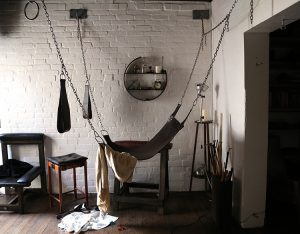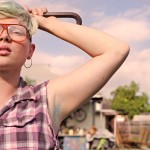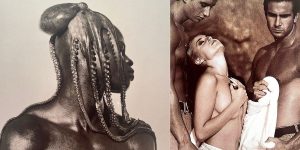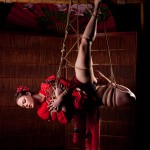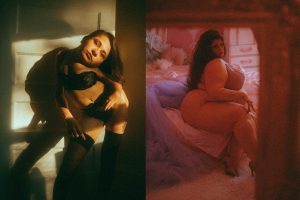Surrealist nude portraits: Images by Joanne Leah
By: Joanne Leah

Joanne Leah is a German-born artist based in Brooklyn NYC. Her photographic works combine sexually charged images of colourful surrealism rife with Jungian symbology. She draws inspiration from her childhood memories and how they have affected her adulthood to depict humankind’s repetitious relationship with our bodies, and our continual want to escape.
For Archer Magazine Issue #14, the GROWING UP Issue, Joanne Leah spoke to Erin Honeybunn Harding.
Image: Sharing is Sharing by Joanne Leah.
EHH: Your work is an absolute joy-gasm of colour and texture! What inspires you to use such a colourful palette in your work as opposed to the grittier style that is typically popular with erotic photography?
JL: My colour palette comes from childhood memories playing with ‘gender-appropriate’ toys for girls in the ’80s, like My Little Pony and Barbie. I also borrow colour from’90s rave culture mixed with ’70s psychedelics.
Are you a part of the make-up and paint application process? If so, what’s that like? Talk to us about the colour story in your works and the use of the vibrant warm tones.
Yes, I apply the body paint myself with the help of the models if there is more than one. I found myself attracted to warmer tones recently, after having a baby. The compositions are sigil drawings manifesting different intentions. Sometimes they are mine, sometimes I ask the subject for an intention. The sigils are activated during the paint application and photography ritual.

Image: Pretzel by Joanne Leah.
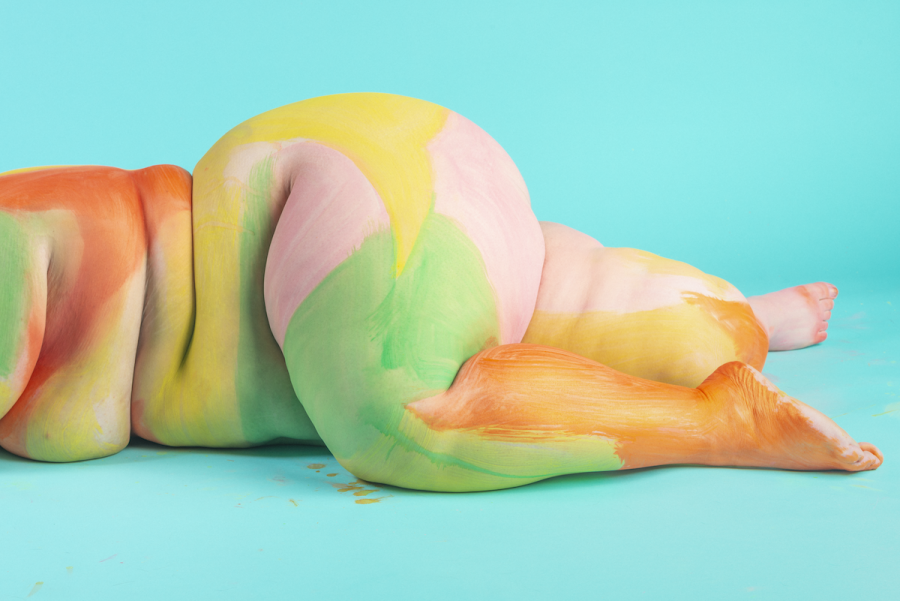
Image: lightroom by Joanne Leah.
You have a diverse range of body shapes and ages in your work, which is quite refreshing to see. Is this done on purpose to challenge conventional beauty notions, perceptions of the body and/or what conventional Westernised societal norms deem to be sensual or sexy?
The diverse body shapes, ages, genders and people are intentional, and most of my subjects find me. Part of my work is about creating community. I think the work attracts non-traditional models, which makes it more resonant.
You have said in the past, “Feminism is just reclaiming sex as your own.” When did you come to this realisation about what feminism means to you? Do you have a defining piece that represents claiming this for yourself?
It was more of a process. I was involved in an abusive marriage for 10 years and I started taking nude self-portraits as a way to escape (and I eventually did). That work definitely played into the male gaze and I was looking for someone to save me. I realised that I had to save myself. That’s when I started taking control of my sexuality and working with other people.

Image: This One’s For The Machine by Joanne Leah.

Image: A Copy With No Original by Joanne Leah.
You draw inspiration from childhood memories as well as your increased artistic confidence as you’ve grown. How have your childhood and adult experiences helped to orchestrate and influence your current signature aesthetic?
I’m not sure how to answer this one except to say that it’s a desire to leave a mark. And something deep inside me integrates with that mark, recognising it in myself as I feel a compulsion to document it.
I read that you study fetish pornography so you can really “go method” for your pose selection sand the intentions behind them. Can you please elaborate more about this exercise?
I have been dabbling in the fetish community for a long time, but I’m more of an outsider looking in. I find fetishes to be a rich part of the human experience and fascinating psychologically.
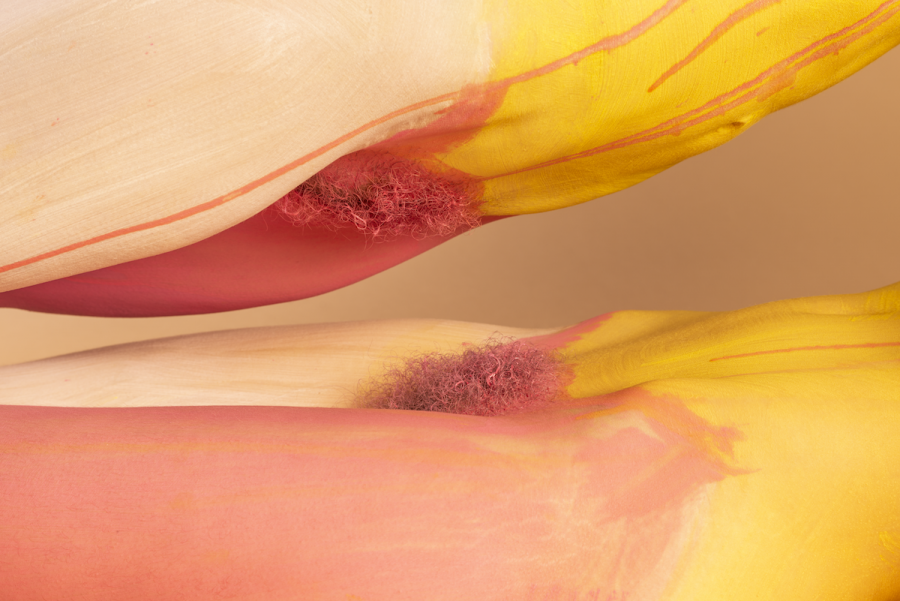
Image: Advent by Joanne Leah.

Image: Does This Gross You Out – A Poll by Joanne Leah.
Typically, when we see visuals involving fetish themes like bondage, the images can be quite explicit, and tend to stay within similar colour stories of blacks and reds and darker club atmospheres. Whereas your work is quite symbolic and can appear more abstract than literal. Do you feel like presenting work with themes of fetishes, kinks and bondage in a studio setting using mixed media, paints and warm tones is a way to invite in audiences that may not necessarily respond to the more typical imagery of bondage and fetish scenes?
People have had strange reactions to my work. The viewer is immediately struck by the colours and studio lighting, but upon further investigation is actually tricked into looking at an image they may consider taboo. Reactions are really a reflection of the viewers’ feelings about themselves.
You still often deal with censorship; you were even featured in the Museum of Sex’s NSFW: The Female Gaze. How has censorship shaped your work?
Because of being constantly censored on social media, it has become an integrated part of my artistic practice. I like playing with the algorithm through concept, colour and composition to see what I can get away with.
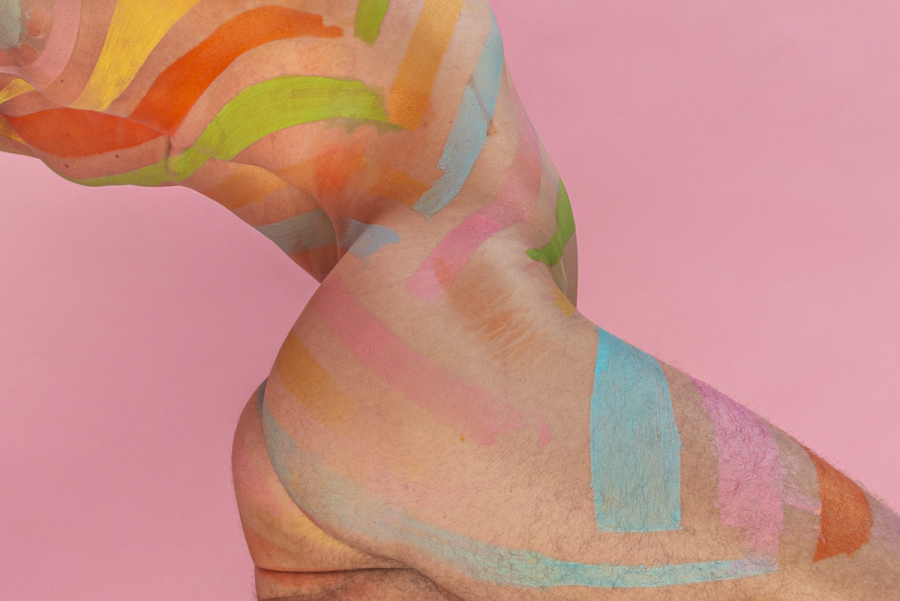
Image: FLETISH by Joanne Leah.
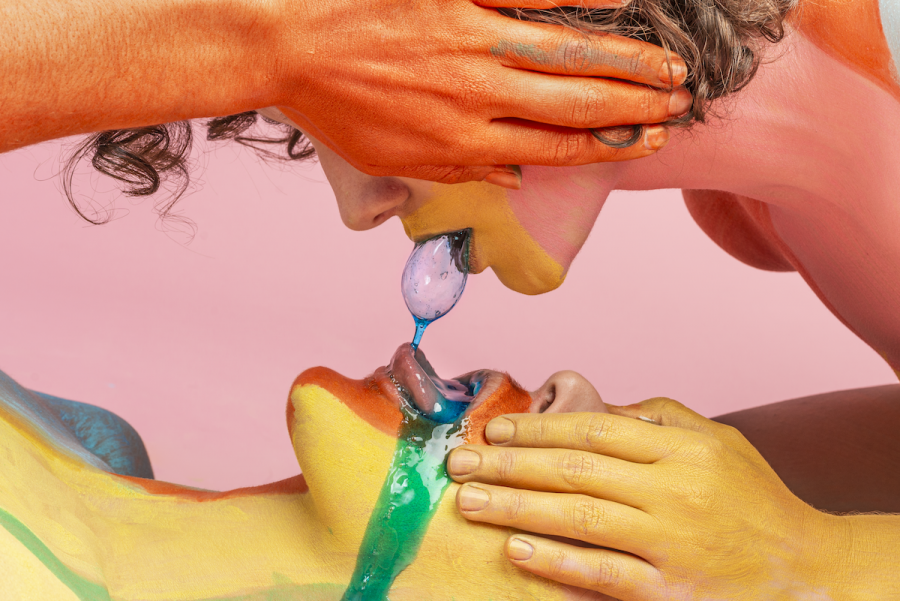
Image: Sharing is Sharing by Joanne Leah.
What prompted you to explore humankind’s relationship with the monotony of inhabiting our bodies while simultaneously trying to escape them?
I’ve always felt awkward and clumsy in my own body. In third grade I had an intense growth spurt and was suddenly the tallest in my class. Throughout the rest of my childhood and adolescence, I struggled with some level of body dysmorphia and often fantasised about being someone else.
There’s a recurring theme in your work of feeling trapped. Given the current circumstances as a result of COVID-19, has isolation been inspiring for your creative operations?
Since I’m NYC-based and my work relies on bodies, it really hasn’t been all that inspiring. But I’m grateful to be more present with myself. Instead of producing work, I daydream, read and research.
I showed some of your works to my mum to get her hot take. She is not what you would consider an artsy type. Her response was: “I’m not sure what part of this human pretzel I am looking at” [laughs]. How would you like mature-aged traditionalists, like my mum, to react to your work?
I love that you showed my work to your mum! I don’t have a preferred reaction, any reaction is enough for me.
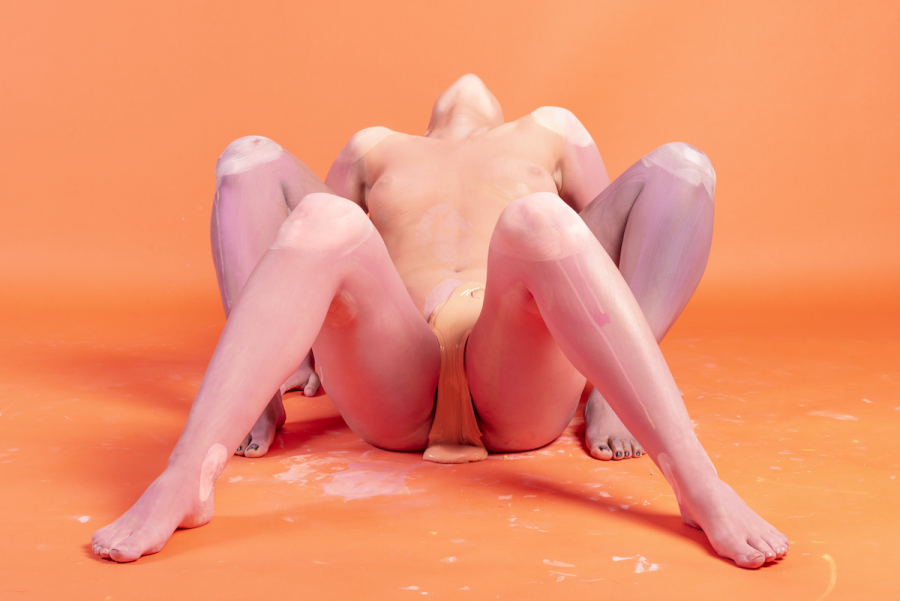
Image: Gauging whether a foreign article is a source of threat or attraction – perhaps both by Joanne Leah.

Image: Cliches don’t die in the future by Joanne Leah.

Image: Universal Symbol for Something by Joanne Leah.
Erin Honeybunn Harding, aka Eevie La Volpe, is a Melbourne-based make-up and hair artist with a background in underground neo-burlesque. Her artistic styling tends to combine retro/vintage fusions and lowbrow art influences.
This article first appeared in Archer Magazine #14, the GROWING UP issue.




